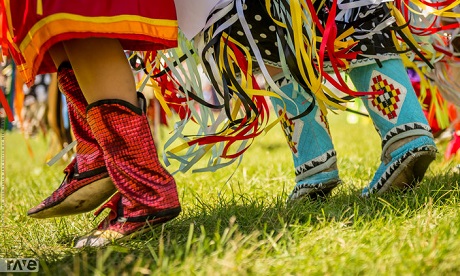“For a long time, I have been interested in how the faith of indigenous peoples is expressed,” says Father François Paradis (75), an Oblate of Mary Immaculate (OMI) missionary in Canada.
Paradis studied the traditional beliefs of the First Nations peoples for a long time before he began adding some of their elements – like the sun dance – into liturgical celebrations.
“I’m still a novice, but I’m incorporating indigenous dances and practices that allow me to express my Catholic faith differently,” he explains.
“But there are questions: does God want me to get so close to indigenous spiritualities? It’s a long road of reflection.
Second Vatican Council
Louise Royer of the Archdiocese of Montreal says a tentative movement towards inculturation took place after the Second Vatican Council (1962-65).
“It introduced practices and symbols of traditional spiritualities,” she says.
“Many of the faithful resisted this movement because they wanted to distance themselves from what could be perceived — and had been presented to them — as pagan practices. But the movement continues.”
Indigenous spiritual practices were demonised and outlawed in Canada until the middle of the 20th century. Christianity was promoted.
Effect on indigenous peoples
A member of the Abenaki tribe says she had no choice but to be Catholic as a child.
“At the time, it was like we needed to silence our beliefs. But the priests didn’t know what we had in our heads, who exactly we were praying to,” she recalls.
“As my grandfather used to say, whether you say ‘Great Spirit’ or ‘God’, they are not two different figures,” says an anthropologist originally from an Abenaki reserve north of Montreal.
Father Peter Bisson says the Society of Jesus has made more efforts over the last decade to better understand First Nations spiritualities.
He began studying the topic in 2008 – the same year Canada set up the Truth and Reconciliation Commission to better understand the effects of residential schools on the First Nations peoples.
They heard that indigenous children forced to attend these institutions were forbidden from speaking in their native languages. Many were abused and thousands died.
The Commission concluded with recommendations for greater equality.
Indigenous beliefs and Catholicism
Bisson has deepened his understanding of indigenous beliefs by organising discussion groups chaired by First Nations peoples.
“It’s just listening, not a discussion. It’s not about solving problems like those caused by residential schools.
“We’re leaving behind our old habits from colonialism, of wanting to offer them something, as if we know more than they do… It’s a humbling challenge for the church.”
Indigenous peoples more naturally emphasise the spiritual aspects of life, he says.
“Their relationship with nature is clearer, more direct. And now, with the ecological transition, we need the help of indigenous spiritualities to reintegrate a strong spiritual connection between us and our environment.
“I have two hopes: the decolonisation of our Christian mindsets, and ecology. If we are more interested in nature, we will listen more to natives and their beliefs, and we will understand each other better.”
Source
- La Croix
- Image: Canadian Encyclopedia
News category: World.




